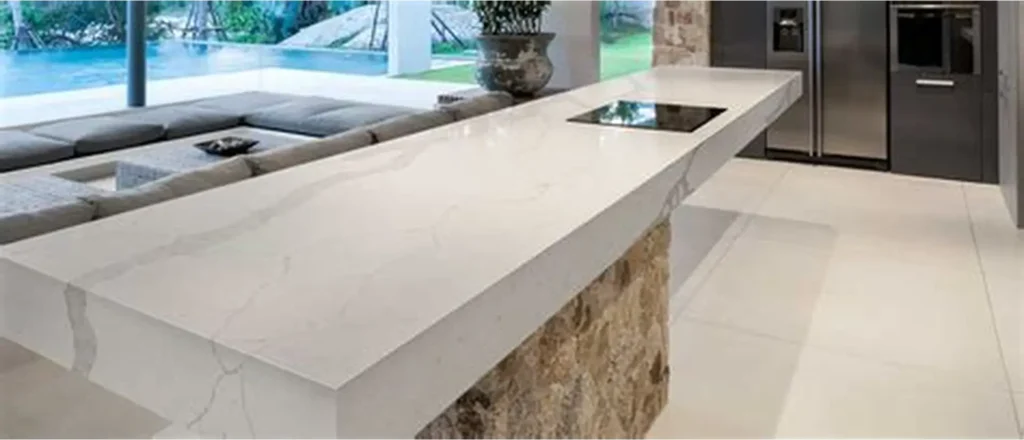
Granite countertops are not only a premium choice for luxury kitchens and bathrooms, but they also bring elegance and longevity to any space
Granite countertops are not only a premium choice for luxury kitchens and bathrooms, but they also bring elegance and longevity to any space. However, despite their resilience, even the most polished granite countertops can fall victim to unsightly grease stains, oil marks, and unexpected visitors like grease ants. If you’ve ever dealt with these issues, you know how stubborn they can be—especially on porous natural stone.
In this article, we’ll explore how to clean grease and oil stains safely from your granite countertops, prevent residue buildup, and eliminate ant infestations without damaging your beautiful surfaces.

Understanding the Nature of Granite Countertops
Granite is a natural stone known for its durability, scratch resistance, and heat tolerance. It’s frequently used in granite kitchen countertops, granite bathroom countertops, and even granite countertops for outdoor kitchens. However, it’s naturally porous, which makes it vulnerable to absorbing oil, grease, and food spills if not properly sealed.
If you’re comparing alternatives, read:
👉 What Are Quartz Countertops?

Why Grease and Oil Stains Happen on Granite
Grease splatter from stovetops, oily hands, and food prep can cause dark stains that seep into unsealed or worn granite. Over time, these marks become harder to remove, and worse—they attract grease ants, a type of insect that thrives on fatty residue.
Problem Areas:
- Granite slabs for countertops near cooktops
- Custom granite countertops in outdoor BBQ areas
- Areas under soap dispensers, oil bottles, or coffee machines
- White granite countertops, where stains are more visible
Step-by-Step: How to Clean Grease and Oil Stains from Granite Countertops
Materials Needed:
- Baking soda
- Water or acetone
- Microfiber cloth
- Plastic wrap
- Granite-safe dish soap
- Soft sponge
Step 1: Blot, Don’t Rub
If the spill is recent:
- Immediately blot (do not rub) the stain using a paper towel.
- Rubbing can push the grease deeper into the granite.
Step 2: Apply a Baking Soda Paste
For older or dark oil spots:
- Mix 1 part baking soda with water (or acetone for deeper stains) to form a paste.
- Apply generously to the stained area.
- Cover with plastic wrap and tape the edges down.
- Let sit for 24 hours.
Afterward, wipe off the paste and rinse with water. Repeat if needed.
For more help:
How Do You Get Grime and Grease Off Granite Countertops?
Step 3: Clean with a Gentle Dish Soap Solution
After removing the stain:
- Use a mix of warm water and a few drops of granite-safe dish soap (like Dawn).
- Gently scrub the area with a sponge.
- Rinse and dry with a microfiber towel to avoid streaking.
How to Remove Grease Ant Infestations on Granite Surfaces
Grease ants (also known as thief ants) are tiny pests that feed on oily substances. Once they find a food source on your granite, they may form trails to and from your countertops.
1. Clean All Food Residue Immediately
- Never leave greasy pots, crumbs, or uncovered food on the countertop.
- Regularly clean with soap and water.
- Dry thoroughly—moisture can attract ants too.
2. Use Ant Deterrents That Are Safe for Stone
- Create a barrier with essential oils like peppermint or tea tree oil (diluted with water).
- Spray near edges and entry points—avoid the granite surface itself unless you’re certain it’s safe.
3. Place Baits Away from the Countertops
- Use grease ant bait stations under cabinets or behind appliances, not directly on granite.
- Never spray generic ant killers on granite—they may contain acids or ammonia that damage the stone.
Curious about what cleaners are safe?
Can You Use Vinegar on Quartz Countertops?
Preventing Future Grease and Ant Issues
Reseal Your Granite Regularly
Granite sealers create a protective layer that repels oil and grease. If your water no longer beads on the surface, it’s time to reseal.
Daily Maintenance Tips:
- Use trivets for oil bottles and cooking utensils.
- Wipe down with a damp microfiber cloth after cooking.
- Avoid Windex, bleach, or vinegar.
Weekly Deep Clean:
- Mix water and gentle dish soap.
- Clean entire surface with a soft sponge.
- Rinse and dry thoroughly.
Also helpful:
How to Remove Water Stains, Calcium Buildup, Limescale, and Dark Spots from Granite Countertops
Granite Countertops in High-Traffic Kitchens
For granite countertops with white cabinets or affordable granite countertops for modern kitchens, daily care is especially important in family homes. Grease from stovetops, oils from food prep, and tiny crumbs can build up fast and attract pests.
Best Granite Choices for Busy Kitchens:
- Black granite countertops – Hide stains better
- Brown granite countertops – Complement rustic designs
- Blue pearl granite countertops – Offer luxurious shimmer and disguise smudges
Consider the cost: Cost to Install Granite Countertops
Granite vs Quartz Countertops: Which Handles Grease Better?
| Feature | Granite | Quartz |
|---|---|---|
| Porous | Yes | No |
| Needs Sealing | Yes | No |
| Grease Resistance | Depends on seal | High |
| Heat Resistance | Excellent | Moderate |
Where to Buy Granite or Find Professional Help
Search locally for:
- Granite countertops near me
- Top-rated granite countertop installers near me
- Wholesale granite countertops suppliers
- Granite countertop showroom [location]
- Granite countertop installation services
Installing new granite? You might need lifting support like a gantry crane
Final Thoughts: Keep Granite Clean, Pest-Free, and Beautiful
Granite countertops are a smart, long-term investment—but they demand a little care. Keeping grease and oil off the surface not only prevents staining, but also deters unwanted guests like ants. With the right cleaning strategies and a consistent maintenance plan, your stone surfaces will look brand new for years to come.
If you’re a homeowner, kitchen designer, or supplier, this guide provides a foundation to educate your customers or enrich your blog with high-value content optimized for both people and search engines.

